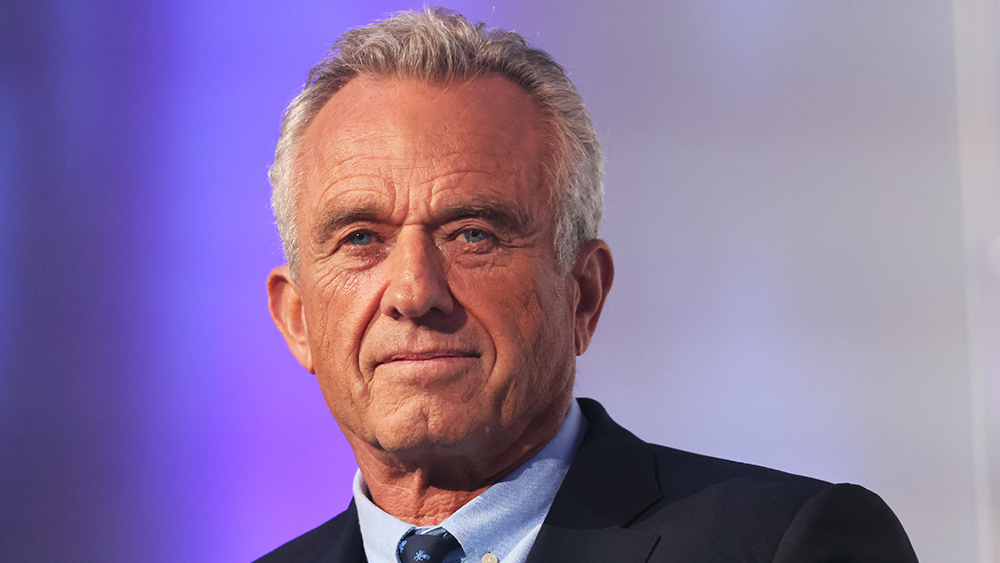Rethinking the nexus of science, technology and governance: Murray Rothbard’s radical vision
04/26/2025 / By Belle Carter

- In Murray Rothbard’s “Science, Technology, and Government,” he argues that the price system in a free-market economy efficiently directs resources toward scientific and technological progress based on consumer demand, avoiding the inefficiencies of government intervention.
- He also points out that state interference in science and technology distorts markets, causing misallocation of resources, shortages and slowed progress. Governments should focus on protecting rights, not economic micromanagement.
- While acknowledging a legitimate government role in defense, Rothbard advocates privatizing military R&D through contracts with firms to align with free-market efficiency.
- He also tackles the market-driven wages, not subsidies, which naturally address labor shortages in science. Government-funded education programs distort incentives and fail to solve underlying issues.
- According to Rothbard, most breakthroughs come from independent inventors, not state-directed projects. He champions a decentralized system that rewards creativity without bureaucratic constraints.
Economist Murray Rothbard’s seminal work, “Science, Technology, and Government,” offers a provocative and timely exploration of the interplay of the increasingly blurring boundaries between science, technology and government.
Published at a pivotal moment in history, this book challenges conventional wisdom and advocates for a radical rethinking of the government’s role in scientific and technological progress. Through a meticulous analysis of economic principles and historical examples, Rothbard presents a compelling case for a free-market approach to science and technology.
At the core of Rothbard’s analysis is the fundamental economic question of resource allocation. In a world of finite resources, how should societies decide between investing in scientific research, technology and other essential goods and services? Rothbard contends that the free enterprise economy, guided by the price system, offers the most efficient solution. Consumers, through their purchasing decisions, signal to businesses which areas are most in demand, ensuring a natural and efficient distribution of resources.
Rothbard argues that government intervention disrupts this delicate balance. When the government dictates resource allocation, it undermines the price system and leads to inefficiencies. This interference can result in shortages, misallocation of resources and, ultimately, a less prosperous society. Rothbard emphasizes that the government’s role should be limited to protecting individual rights and providing essential services, not micromanaging the economy.
Rothbard extends his critique of government intervention to the specific challenges of modern science and technology. He identifies two key problems: the general allocation of resources into science and technology versus other sectors, and the allocation of resources into military technology.
For the first problem, Rothbard advocates for a free market solution. He argues that government meddling in scientific research and technology development will only distort the economy and hinder progress. Instead, he believes that the market, driven by consumer demand and individual initiative, will naturally allocate resources to the most promising areas of research.
For the second problem, Rothbard acknowledges the government’s role in military defense but stresses the importance of keeping military affairs as much as possible in private hands. He advocates for contracting military research and development to private firms, believing this approach is more efficient and aligns with the principles of free enterprise.
One of the most intriguing aspects of Rothbard’s analysis is his debunking of the “scientist shortage” myth. He argues that the idea of a shortage is often based on a misunderstanding of market dynamics. If there truly is a shortage of scientists, Rothbard contends, the market will naturally respond by increasing salaries, attracting more people into the field and ultimately resolving the shortage.
Rothbard criticizes government attempts to subsidize scientific education, arguing that such interventions only distort the market and fail to address the root cause of the problem. Instead, he suggests that the government should focus on removing barriers to entry and allowing the market to determine the optimal number of scientists.
The author celebrates the role of independent inventors, arguing that many of the most important inventions of the 20th century were the result of individual creativity and initiative, not large-scale, government-directed research. He believes that the free market provides the best environment for innovation, as it allows inventors to pursue their ideas without bureaucratic interference.
Rothbard emphasizes that scientific discovery is often unpredictable and cannot be forced or planned. He argues that the government’s attempts to control and direct research can stifle creativity and lead to stagnation. Instead, he advocates for a system that encourages individual initiative and rewards innovation.
In conclusion, Rothbard’s “Science, Technology, and Government” challenges us to rethink the relationship between the state and scientific progress. He argues that the free market, with its emphasis on individual freedom and innovation, is the best path to technological advancement and economic prosperity. While his ideas may be controversial, they offer a compelling alternative to the prevailing wisdom and invite us to consider the potential of a more decentralized, market-driven approach to science and technology.
Learn more about the book “Science, Technology, and Government” by watching the video below.
This video is from the BrightLearn channel on Brighteon.com.
Sources include:
Submit a correction >>
Tagged Under:
big government, free enterprise, free market economy, freedom, future science, future tech, government intervention, government subsidy, innovation, Liberty, micromanagement, Murray Rothbard, overreach, rational, science, technology, truth
This article may contain statements that reflect the opinion of the author
RECENT NEWS & ARTICLES
COPYRIGHT © 2017 BIG GOVERNMENT NEWS





















